The 2004 movie/documentary What the Bleep Do We Know? has a simple answer to life’s problems: Quantum Mechanics! Can’t get a date? The answer: Quantum Mechanics. Hate your job? The answer: Quantum Mechanics. Worried about the long term health effects of your prescription anxiety pills? Have no fear. Quantum Mechanics is the answer. The movie intermixes a maelstrom of flashy computer generated special effects, the ultimately uplifting story of Amanda, a divorced photographer hooked on anxiety pills, who finds enlightenment and a good man through the power of quantum mechanics, and interviews with fourteen experts including physicist Amit Goswami, physicist Fred Alan Wolf, physicist John Hagelin, physicist David Albert, neuroscientist and pharmacologist Candace Pert, anesthesiologist Stuart Hameroff, a number of others, and, oh yes, New Age spiritual guru JZ Knight channeling Ramtha, the 35,000 year old spirit of a warrior from the lost continent of Lemuria. As it happens, the filmmakers and some of the experts are adherents of JZ Knight/Ramtha.
What the Bleep Do We Know? implicitly advances the theory that not only does human consciousness cause the mysterious collapse of the wave function in quantum mechanics but in fact can control or influence the outcome of the collapse, thus allowing human beings to influence or control events through the power of their mind and quantum mechanics. What the Bleep Do We Know? is vague about the actual textbook theory of quantum mechanics, not surprisingly since this theory gives no clear answer as to why, when, or how the quantum wave function collapses. The movie/documentary is one of the more prominent recent examples of the linking of quantum mechanics and mysticism, sometimes by experts with impressive resumes.
Like most popular science, the movie makes very limited use of mathematics: rendering the movie title in mathematical symbols on the DVD case and web site and a brief sequence of computer generated flying equations that are never explained. This is a very common technique in video, both science “fact” and science fiction where the audience is briefly shown a mathematical formula or equation in cryptic, often Greek, symbols with either no explanation or a vague explanation. Brian Greene’s The Elegant Universe PBS/Nova special, which manages to promote the highly mathematical field of superstrings with almost no mathematics, features a couple of scenes with cryptic equations on a blackboard or notebook page, for example.
What is Quantum Mechanics Actually?
The textbook theory of non-relativistic quantum mechanics is actually quite simple. Quantum Field Theory, sometimes abbreviated QFT, which purports to reconcile quantum mechanics and the theory of special relativity is extremely complex, abstract, and difficult to learn. The author once attended a lecture by the physicist Leonard Susskind in which he stated that it took ten years to learn Quantum Field Theory. This seems to be true for most people. In contrast, basic quantum mechanics is straightforward and could probably be explained in a movie/documentary like What the Bleep Do We Know?
The basic quantum mechanics formulated by Niels Bohr, Max Born, Werner Heisenberg, and their colleagues over the objections of Albert Einstein, Erwin Schrodinger, and Prince Louis deBroglie asserts that sub-atomic particles (and presumably macroscopic objects like tables and chairs) are characterized by a quantum state or quantum wave function usually represented by the Greek letter [tex] \Psi(x) [/tex]. This wave function is a complex number representing a wave with an amplitude and phase. For example:
[tex] \Psi(x) = e^{\imath p x} [/tex]
The quantum wave function is governed by a wave equation, a partial differential equation. There are several different wave equations depending on the type of particle: the original Schrodinger Equation, the Dirac Equation, and the Klein-Gordon equation. As far as the author can determine, these equations were found empirically — that is they were educated guesses that turned out to match experimental data on certain types of particles. Subatomic particles are thought to have a mysterious instrinsic “spin” that is somewhat analogous to the spin/angular momentum of a macroscopic body. Different wave equations govern the quantum wave functions of particles of different spin. The basic Schrodinger Equation which describes the electron in the hydrogen atom approximately (the electron is a spin 1/2 particle which is exactly described by the Dirac Equation) is:
[tex] \imath\hbar\frac{\partial}{\partial t}\Psi (x, t) =\frac{-\hbar^2}{2m}\frac{\partial^2{\Psi}}{\partial{x^2}} + V(x)\Psi(x) [/tex]
where [tex]\hbar [/tex] is Planck’s constant divided by [tex] 2 \pi [/tex], [tex] \Psi [/tex] is the mysterious “wave function”, [tex] V(x) [/tex] is the potential such as the electrical potential of the hydrogen atom, and [tex] x [/tex] is the position.
Qualitatively, one can think of the quantum wave function as a physical wave like a water wave, a sound wave, or a radio wave. These familiar phenomema are governed by wave equations as well, similar to the Schrodinger equation in many ways. This similarity to known phenomena and mathematics made Schrodinger’s wave picture and his wave equation appealing to the physicists of his time (the 1920’s) and easy to use.
So far so good. The problem is that when one conducts experiments with electrons, one sees something consistent with point particles, not waves. Electrons are detected as points on photographic film or a modern electronic imaging device, physical tracks in a cloud chamber or bubble chamber. Waves interfere. Interference effects appear with electrons in accumulated patterns of many electrons. If one fires properly prepared electrons through a crystal, dots will appear on a sheet of photographic film. Each electron appears at a specific point on the film, unlike a conventional wave which would be spread out over the film. As many dots appear on the film, unexpectedly an interference pattern will appear as if the electrons are somehow also a wave diffracting through the crystal. Similar effects are observed with other subatomic particles such as neutrons.
At this point, the formal mathematical theory of quantum mechanics expressed in symbols gets fuzzy. Bohr, Born, Heisenberg, and their colleagues argued that there was something called a “measurement” or “observation,” which they did not define clearly. In most practical experiments, the measurement is the determination of the position of a subatomic particle such as an electron (a dot on a sheet of photographic film for example). The square of the amplitude of the quantum wave function [tex] |\Psi(x)|^2 [/tex] was the probability of observing a particle at the position [tex] x [/tex].
In general, the “measurement” was represented in symbolic mathematics as an operator acting on the quantum wave function [tex] \Psi [/tex]. The measurement supposedly caused the quantum wave function to instantaneously jump to an “eigenfuction” or “eigenstate” [tex] \Psi_n(x) [/tex] of the operator. An “eigenfunction” is a simple concept with a fancy German name. An operator is something, such as taking the derivative or simply multiplying by two, that transforms one function into another function.
[tex] \hat T f(x) = g(x) [/tex]
An eigenfunction of an operator [tex] \hat T [/tex] is a function [tex] f(x) [/tex] such that the operator transforms the function into a factor, known as an “eigenvalue,” times the original untransformed function:
[tex] \hat T f(x) = a f(x) [/tex]
With a position measurement, this meant the quantum wave function collapsed to a point, often represented by a so-called Dirac function [tex] \delta(x) [/tex] where the Dirac function is zero everywhere except at [tex] x = 0 [/tex] and infinite at [tex] x = 0 [/tex]. This infinity is such that the Dirac function integrated to unity (1):
[tex] \int \! \delta(x) \, \mathrm{d}x = 1 [/tex]
A measurement could also be a measurement of the momentum of the particle. In this case, the appropriate operator is the momentum operator:
[tex] \hat P = -\imath \hbar \frac{\partial}{\partial x} [/tex]
In this case, the so-called eigenfunction or eigenstate of momentum is:
[tex] \Psi(x) = e^{\frac{\imath}{\hbar} p x} [/tex]
where the eigenvalue is the measured momentum [tex] p [/tex]. In this case, the probability of measuring a momentum [tex] p [/tex] is the so-called inner product of the original quantum wave function [tex] \Psi [/tex] with the complex conjugate of the so-called eigenstate:
[tex] \int {\Psi(x) e^{-\frac{\imath}{\hbar} p x} dx } [/tex]
There is something remarkable and unexplained here. The quantum wave function jumps discontinuously and instantaneously from one form to another. If the measurement is a position measurement, the quantum wave function, which may be spread out over quite a distance, collapses instantaneously (faster than light) to a single point. What causes the collapse? What is a measurement? Schrodinger’s Equation and the other equations of basic quantum mechanics do not tell us. Representing the measurement as a symbolic operator does not tell us; it obscures the problem. Textbook quantum theory does not tell us what physical process actually causes the collapse, how the collapse occurs (it is presumably instantaneous), or why. In the textbook theory of quantum mechanics, the collapse of the wave function to a point is completely random . A conscious observer has no power to influence or control the outcome of the collapse (the measurement or observation).
The Quantum Measurement Problem
From the very beginning of modern quantum mechanics in 1927, some physicists, notably Albert Einstein, Erwin Schrodinger, and Prince Louis deBroglie, were dissatisfied with this hazy, hand waving explanation of what was going on. This has led to a number of attemps to clarify quantum mechanics including the Many World Interpretation of Hugh Everett, the pilot wave theory of Louis deBroglie and David Bohm, and a number of less well known theories and interpretations. Significantly, a few physicists including Eugene Wigner and John Wheeler speculated that consciousness might be directly involved in the collapse. Perhaps a conscious observer was needed to collapse the wave function. This in turn opened the door to a number of mystical possibilities.
The quantum measurement problem is a significant problem. It is often said that quantum mechanics makes accurate predictions for a wide range of physical phenomena and that it has never been wrong. There is supposedly no experiment that contradicts quantum mechanics in over ninety years of experiments in atomic, nuclear, and particle physics. Yet, quantum mechanics is a plastic theory. Because the theory does not provide a clear rigorous theory of when the measurement occurs, the predictions are ambiguous. If an experiment unexpectedly shows that a particle behaves as a wave, the measurement process is sufficiently ambiguous that one can probably argue that this is in fact what should have been seen. One simply didn’t understand quantum mechanics prior to the experiment. Conversely, if one observes particle-like behavior where one naively expected wave-like behavior, once again one only has to redefine what constitutes a “measurement” that collapses the wave function.
One of the problems that quantum mechanics was developed to solve is the stability of atoms. If matter is comprised of atoms and if an atom consists of a positively charged nucleus with negatively charged electrons somehow “orbiting” the nucleus, there is a serious problem. In the classical electromagentic theory of Maxwell, a charged particle that is accelerating, which can mean either changing speed or direction, will radiate electromagnetic waves. The atom should quickly decay. Yet, this was not observed. There was clear evidence that atoms contained a positively charged nucleus and seemingly electrons in something like an orbit around the nucleus. Nonetheless, the atoms did not decay.
In orthodox quantum mechanics, the electrons in an atom are uncollapsed wave functions. The phase of the wave function oscillates in time but the amplitude of the wave function is constant. This means somehow that the spatial distribution of the electric charge around the nucleus is constant — unchanging. Thus, there is no acceleration and the atom is stable. Amongst other things, the observed stability of atoms means that the wave function must refer to a physical reality, not to the observer’s state of knowledge about the electrons in the atom. If the electrons had a definite position unknown to the observer, e.g. a scientist performing an experiment, the atom would radiate electromagnetic waves and decay. The wave function cannot collapse for the atom to be stable.
These electrons in uncollapsed wave functions nonetheless appear to interact with other particles and objects, apparently without collapsing. For example, a mirror reflects light. This is thought to be due to the electric charge in the electrons in the atoms. Yet, seemingly, the electron wave functions in the atoms of the mirror do not collapse. The atoms in the surface of the mirror remain stable and do not decay as one might naively expect. So, too, if one pushes on the mirror, the firm resistance of the mirror to one’s hand is attributed to electrostatic repulsion between the electrons in the mirror and the electrons in the atoms of one’s hand. Yet, again, it does not seem that pushing on the surface of a mirror causes the electron wave functions to collapse and the atoms on the surface of the mirror to decay as one might naively expect. However, if one blasts the mirror with energetic x-rays, the x-rays will knock loose electrons which can be observed as tracks in detectors — seemingly point particles. The electron wave functions collapse and the mirror will physically degrade when bombarded with x-rays.
Why does one interaction or “observation” appear to collapse the wave function and another does not? To be sure, there is probably some hand-waving explanation of this seeming problem with quantum mechanics in the advanced physics research literature. But really, is it understood? Probably not.
These observations with mirrors and other macroscopic objects arguably bracket the conditions under which the wave function collapses. There are many practical and mathematical difficulties in determining what quantum mechanics predicts for a macroscopic object comprised of trilions of trilions of trillions of atoms and molecules. Presumably, scientists can study this behavior at the level of atoms, molecules, or small numbers of atoms with atomic force microscopes and other modern instruments and determine experimentally when and under what conditions the wave function is collapsing (if this is even a correct interpretation of the physical phenomenon). It is probably more accurate to say that experiments may be able to determine when and under what conditions the wave function collapses assuming that the wave function collapse really exists as a meaningful physical concept (for example, the pilot wave theory of quantum mechanics does not require the wave function to collapse to explain the puzzling observations).
Symbols and Concepts
The expression of quantum mechanics as a formal mathematical system of symbols (that could be programmed on a modern computer for example) does not contain a predictive mathematical formula for when and under what conditions the wave function will or will not collapse. The expression of the “measurement” or “observation” as a symbolic operation such as the operator [tex] \hat T [/tex] does not answer this question. It actually sweeps the problem under a symbolic rug as Einstein, Schrodinger, and deBroglie realized. Rather physicists are using fuzzy verbal concepts such as Niels Bohr’s “complementarity” or unstated theories or speculations to specify when the wave function collapses and when it does not.
This is not unusual. When physical theories are expressed in purely symbolic forms such as Maxwell’s Equations or Schrodinger’s Equation, a great deal is often hidden in the definition of the symbols. The quantum mechanical [tex] \Psi [/tex] is a good example. But, even in Maxwell’s Equations, exactly what is the definition of the electric field [tex] E [/tex] and the magnetic field [tex] B [/tex]. How are these symbols in the formal mathematics connected to real physical measurements in the laboratory or in the field? In physics and engineering, ultimately the abstract symbols must correspond to physical macroscopic objects and systems that form sense perceptions in the human mind, e.g. dots on a photograph, the deflection of a meter, and so forth. Somewhere in this process shapes and more generally concepts that the human mind can handle, but which we cannot (yet) express in purely symbolic terms usually appear.
Quantum Mysticism
There is a long history of physicists and other scientists wandering off into mystical or spiritual areas. During the Renaissance, the sharp separation and alleged conflict between science, religion, and mysticism largely did not exist. Johannes Kepler was an astrologer and mystic. Tycho Brahe was an astrologer and alchemist. Isaac Newton practiced alchemy and had a range of religous and mystical views. Even in the early nineteenth century, Michael Faraday was deeply religious although he tried to keep his personal religious views out of his scientific publications. Faraday and many of the early electrical experimenters and theorists were deeply influenced by mystical ideas about the unity of nature which led them to actively seek the evidence of a strong connection between electricity, magnetism, light, and chemistry which they found. What the Bleep Do We Know? features an entertaining and probably false story in which the Indians (Native Americans) were supposedly unable to see Christopher Columbus’s ships because they were not mentally prepared to see the ships — until a wise shaman somehow opened their eyes. Astonishingly, early electrical experimenters had been studying electricity extensively for at least twenty years without noticing that there were magnetic effects (fields in modern parlance) around wires carrying electrical currents. The invention of the electric battery in about 1800 made it possible to conduct extensive, detailed, repeatable experiments with electricity. The mystically inclined Hans Christian Oersted easily found the magnetic field around a current-carrying wire with a magnetic compass, something that anyone could have done for…twenty years. He saw what he was mentally prepared to see; it does happen (all the time).
The evolution and growth of modern science has been accompanied by the adoption of a militant, materialistic, reductionist, and atheistic creed by many leading scientists and popularizers of science (see, for example, works by Steven Weinberg and Carl Sagan). Nonetheless, there have been a number of modern physicists, including some with impressive resumes, who have bucked the trend and become enamored of various mystical, parapsychological, and spiritual ideas. Arthur Eddington developed a complex mathematical theory of everything with strong mystical elements with which he apparently became obsessed. This may have contributed to the notorious bitter feud between Eddington and Subrahmanyan Chandrasekhar in which Chandrasekhar’s discoveries threatened to shatter Eddington’s theory. The Nobel-prize winning physicist Brian Josephson is probably one of the best known, most prominent recent examples. Josephson became fascinated with extrasensory perception (ESP) and other exotic ideas. Although many of his ideas are rather materialistic, the physicist David Bohm became associated with various mystical and spiritual individuals and groups such as the spiritual guru Krishnamurti. Bohm’s ideas, in particular, have become intertwined wih many mystical ideas about quantum mechanics. John Hagelin, who appears in What the Bleep Do We Know?, features an impressive resume before leaving mainstream (government funded) theoretical particle physics to join the Maharishi Mahesh Yogi‘s transcendental meditation movement. Relevant to the theme of What the Bleep Do We Know?, the physicist and engineer Robert Jahn conducted experiments for years at Princeton claiming to detect small effects where people could slightly alter the outcome of random, presumably quantum mechanical processes such as radioactive decays or electronic noise.
The organized, mostly government-funded physics “community” has taken various measures to distance itself from these mystical, spiritual, and parapsychological theories and experiments. It is almost impossible to publish research papers on these sorts of things in major physics publications such as Physical Review. A few years ago, the prominent and influential arxiv.org preprint server shifted from a policy of being open to all to requiring an institutional affiliation, a sponsor to endorse the preprint, and some other “precautions,” generally to block publications by real or alleged “crackpots.” The mainstream physicist David Albert who appeared in What the Bleep Do We Know? rapidly distanced himself from the movie, claiming he was quoted out of context and did not realize the subject matter of the film; this may well be true.
It is difficult to know what to make of this sort of thing. Some important aspects of quantum mechanics are almost certainly not understood. Thus, it is not possible to rule out a direct role for consciousness or other mystical extensions to quantum mechanics. It is also clear the textbook theory does not require a role for consciousness as What the Bleep Do We Know? and similar materials claim — quite the opposite. Most physicists appear to be attracted to the modern field by the discovery that they are good at physics in school, which often means good at specific calculations or derivations. Modern physics is little more than a glory-driven professional sport like football or basketball — with plenty of egos and mindless competition and precious little “enlightenment”. Intrinsically, fundamental physics such as theoretical particle physics, cosmology, and so forth deals with fundamental questions about the nature and origin of everything. Some people come into physics primarily driven by curiosity, spiritual, or philosophical feelings about these basic questions. There is obviously an appeal to finding evidence of God or some comforting mystical reality in science and in empirically measurable phenomena such as quantum mechanical phenomena. More cynically, career prospects and salaries in physics are relatively poor; becoming a spiritual guru with a Ph.D. in Physics may be a career option, even a lucrative one in rare cases. Also, despite the general lack of mainstream government funding, over the years, a number of wealthy philanthropists such as the late Laurance Rockefeller and Robert Bigelow have funded a plethora of far out research topics such as parapsychology, crop circles, and UFOs.
Crypto-Mysticism in Mainstream Physics
Probably most readers of this article will find the story of a New Age guru allegedly channelling the 35,000 year old spirit of a warrior from the lost continent of Lemuria who promotes a questionable extension of quantum mechanics amusing, if not ridiculous, and may enjoy a smug sense of superiority over the poor benighted folks who believe this sort of thing. Yet, labels like cult, pseudoscience, bad science, junk science, and pseudomathematics are generally applied only to relatively small fringe groups with little money, power, or prestige. In fact, it is common to encounter religious and mystical language and imagery in popular physics articles. Sometimes it is deadly serious. Often the words are used in a way that lends itself to a double meaning. That is, a statement has one meaning if the words are given their common meaning in English, yet a different meaning if the “special meaning” used by physicists is used. In many cases, the religious or mystical language or imagery is ostensibly tongue in cheek, not really serious.
A fairly extreme example of this is the title of Leon Lederman’s book The God Particle, about the Higgs particle, the “Holy Grail” (another religious image) of particle physics. The title says it all. Is the Higgs particle really equivalent to God? Albert Einstein referred to God frequently in various public appearances. There is a famous statement by Einstein “Raffiniert ist der Herrgott aber boshaft ist Er nicht.” which is commonly translated as “The Lord is subtle, but not malicious.” Abraham Pais used this translation as the title of his biography of Einstein. What Einstein meant by “God” is not clear and the subject of some controversy. The famous American rabbi and Jewish leader Herbert Goldstein specifically asked Einstein in a telegram if he believed in God. Einstein allegedly responded with:
I believe in Spinoza’s God who reveals Himself in the orderly harmony of what exists, not in a God who concerns himself with fates and actions of human beings.
It is worth understanding that the philosopher Spinoza’s views were very far from either traditional rabbinical Judaism or Christianity. He was, in fact, excommunicated by his Jewish religious community. This custom of using the term “God” in a way that differs dramatically from common usage is frequent in the popular physics literature. Here is a fairly clear statement of this practice from Leonard Susskind’s popular physics book The Cosmic Landscape: String Theory and the Illusion of Intelligent Design (page 8):
I don’t know the religous beliefs of Davies or Greenstein, but I would be wary of too literal an interpretation. Physicists often use terms like design, agency, and even God as metaphors for what is not known — period. I have used the term agent in print and have been sorry every since. Einstein often spoke of God. “God is cunning but He is not malicious.” “God does not play dice.” “I want to know how God created the world.” Most commentators believe Einstein was using the term God as a metaphor for an orderly set of laws of nature.
Well, maybe. Why not use “what is not known” instead of “God,” which in common usage means something totally different?
It is also common to encounter language about “knowing God,” “glimpsing God,” “knowing the mind of God,”, or “glimpsing the mind of God” in the popular physics literature. There is an example of this in Brian Greene’s PBS/Nova special The Elegant Universe where a physicist talks about knowing the mind of God.
It is also common to encounter mystical or religious references that are supposedly tongue in cheek. For example, the PBS/Nova special The Elegant Universe contains a seemingly tongue in cheek story about the original supposed breakthrough in superstrings. The two physicists are struggling to perform a complex symbolic derivation. There is however a raging storm outside which threatens to distract them from sucess. Are the Gods themselves seeking to prevent the discovery? The physicists, of course, succeed despite the raging storm. It is all reminiscent of the jealous Creator of some Gnostic Christian sects who seeks to keep men ignorant, but knowledge gnosis of the true supreme God sets men free. Murray Gell-Mann used the mystical term “The Eightfold Way” to humorously label his theory of quarks. Particle physicists initially named two of the quarks “truth” and “beauty,” but later renamed them “top” and “bottom.”
The central idea of most mystical systems is the absolute unity of all things, an absolute One identified with God and often the universe as well. In the western Neoplatonic tradition, this is closely associated with the mathematical mysticism of Pythagoras and Plato, in which mathematics plays a central role in the nature and architecture of the universe. The quest for a unified field theory or theory of everything (TOE) in the popular physics literature bears a striking resemblance to this ancient mystical belief. Even the “landscape” of a myriad alternate universes, the subject of Susskind’s book, bears a suspicious resemblance to the myriad failed worlds that God creates before our universe in some versions of the Jewish Kabbalah, the Jewish mystical tradition. In the Kabbalah, one of the supreme goals is to learn and master the most secret name of God, which confers infinite power on whoever speaks it; this bears a marked resemblance to the quest for a secret equation, a theory of everything, that explains the entire of creation and which might confer great power as well (antigravity, warp drives, quantum teleportation, time travel, who knows?).
Scientism is the idea that natural science is the most authoritative worldview or aspect of human education, and that it is superior to all other interpretations of life. Its’ appeal to many scientists is easy to see. Science can take the place of traditional religion. With quantum mysticism, the mysticism and spirituality is out in the open, clearly recognizable — proudly touted, in fact, whatever its’ actual merits. The disguised (crypto) mysticism of the popular physics, and other popular science, literature is less clear, easy to deny as just words used in an odd way or as light hearted humor. No one is really claiming the Higgs particle is God…or are they? But the dangers from heavily funded and prestigious mainstream science gone off the rails would dwarf the dangers from even the largest New Age cult to insignificance.
Conclusion
Returning to What the Bleep Do We Know? and similar materials, caution is well advised. Consciousness is not a part of regular textbook quantum mechanics nor is it clearly necessary to explain the logical and philosophical problems with quantum mechanics. It may be that we will one day find that mysticism, parapsychology, or some similar exotic idea is involved in quantum mechanics, but we do not know this today nor are we close to an answer.
Speaking mathematically, it may be possible to find the explanation for the quantum measurement problem by simply adding a non-linear term to the Schrodinger Equation that causes the collapse of the quantum wave function under certain physical conditions, most probably some sort of interaction between the wave functions of different particles. It is very hard to know what the precise form of this additional term might be. There have been a few attempts in the physics literature. Most likely it is necessary to think carefully about the conceptual issues swept under the rug in the quantum measurement operators [tex] \hat T [/tex] to make educated guesses about the nature of this term if it exists. It remains quite possible that solving these problems requires a radical change, discarding the Schrodinger Equation and other known mathematics almost entirely.
Suggested Reading/References
Copyright © 2010, John F. McGowan, Ph.D.
About the Author
John F. McGowan, Ph.D. is a software developer, research scientist, and consultant. He works primarily in the area of complex algorithms that embody advanced mathematical and logical concepts, including speech recognition and video compression technologies. He has extensive experience developing software in C, C++, Visual Basic, Mathematica, MATLAB and many other programming languages. He is probably best known for his AVI Overview, an Internet FAQ (Frequently Asked Questions) on the Microsoft AVI (Audio Video Interleave) file format. He has worked as a contractor at NASA Ames Research Center involved in the research and development of image and video processing algorithms and technology. He has published articles on the origin and evolution of life, the exploration of Mars (anticipating the discovery of methane on Mars), and cheap access to space. He has a Ph.D. in physics from the University of Illinois at Urbana-Champaign and a B.S. in physics from the California Institute of Technology (Caltech). He can be reached at jmcgowan11@earthlink.net.
Sponsor’s message: Receive free weekly updates about new math books. Don’t miss great new titles in the genres you love (such as Mathematics, Science, Programming, and Sci-Fi): https://anynewbooks.com
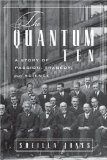
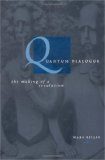
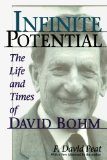
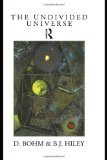
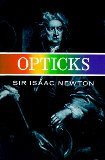
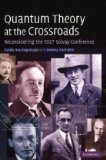

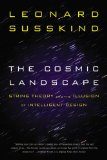


Thanks! We need elaborated articles like this. Can I add also another book that I liked? MANJIT KUMAR QUANTUM.
Thank you for writing this.
As a quantum information theorists, I often get angry at the mystics, but it is very hard to make them stop.
You made some very good points and contributed lots of context for people who may not be familiar with the early QM stuff.
Also, I really liked your quote about research being akin to professional sports + egos. Lol…
> Why does one interaction or “observation” appear to collapse the wave function and another does not? To be sure, there is probably some hand-waving explanation of this seeming problem with quantum mechanics in the advanced physics research literature. But really, is it understood? Probably not.
Actually, this is quite well understood.
https://en.wikipedia.org/wiki/Quantum_decoherence
Another reference:
https://www.flownet.com/ron/QM.pdf
According to the PBR theorem,
https://www.nature.com/news/quantum-theorem-shakes-foundations-1.9392
since the quantum wavefunction has been directly measured as a real physical object,
https://www.nature.com/nature/journal/v474/n7350/full/nature10120.html
the vision of the universe no longer could be considered psi-epimestic (merely information contained in the quantum wavefunction). The possible remained alternative is psi-ontics (real objects outside our conciousness).
Recent studies have shown how quantum decoherence is not due to consciousness. Also it was explained why, at macroscopic level, reality is not so uncertain. Such findings vindicate the deterministic and classical physics theories:
https://www.scientificamerican.com/article.cfm?id=bringing-schrodingers-quantum-cat-to-life
epistemic theories shared by new agers seem wrong:
https://www.nature.com/news/a-boost-for-quantum-reality-1.10602
It is not in our brain. It doesn’t depend on our observation. It doesn’t depend on our willingness. The universe matter is not distantly “interconnected”.Particles are not involved by “spooky actions”in that sense. Particles Interaction is both real and ontic.
https://phys.org/news/2012-04-quantum-function-reality.html
https://phys.org/news/2012-05-paper-controversy-nature-quantum-function.html
All those quantum mystic myths have been widely debunked, but real scientists have never had doubts about that. I’m sorry, but this seems the beginning of the end of the “age of aquarium”. Science looks more fancy than the speculation of many narcisistic new agers. The real “magic power” of mind is intelligence and imagination, which leaded us to the moon and made our dreams true. No “quantum vibrations” connected by the “infinite intelligence” coming from our brain.
https://www.edn.com/electronics-blogs/measure-of-things/4418902/Quantum-wave-functions-come-alive–May-the-Bohr-Model-rest-in-peace
Nevertheless, the Law of attraction is good for people who want to satisfy their desire without using their intelligence.
https://www.huffingtonpost.com/vanessa-van-edwards/law-of-attraction_b_2082921.html
https://www.heatherkappes.com/?page_id=68
https://youarenotsosmart.com/2010/06/23/confirmation-bias/
Thus, assuming that the quantum wavefunction is ontic, the Copenhagen interpretation is shifted in favour of the Many Worlds Interpretation (MWI). In MWI you can imagine yourself living by infinite copies of yourself, one for each possible universe, with infinite outcomes. Therefore, if in this universe you are the Dalai Lama, then in another universe you are Adolf Hitler. In my humble opinion, that’s one more reason to believe that quantum mechanics theory should not be extended to our common macro reality and our human beliefs, otherwise we risk to fall into an absolute relativism and our life could stick to just a random nonsense. That’s why I blame quantum mysticism or, in general, theories which want to merge science and religion. Nevertheless, science is falsifiable, as stated by Karl Popper. Thus, even quantum religions should be forced to review their statements, and that is a nonsense too. That’s why I do not trust too much New Age an other quantum woo beliefs. In a MW model, there are infinite bodies and infinite souls who live all togheter contemporary, one for each universe. In my opinion that is a nonsense even for the vedic religion, because it is impossible to detect one specific soul beeing able to improve the self awareness for ascending to a higher level in the next life/universe. According to a MW quantum mysticism , there’s no need of reincarnation, because for a living creature, all the souls do their experience at the same time for each respective universe.
We should just let scientists doing their own commendable work, without mixing science and religion, and respecting all beliefs without the arrogance to use science for demonstrating which is the right belief.
Finally, if some eminent quantum mysticism believer like Deepak Chopra says that we can heal ourselves just by using the power of the universe in our mind (and maybe someone affected by cancer died because of such statement, since refused the mainstream medicine), then why he looks older? Why your charming white hair Mr. Chopra?
Regards.
The movie “What the Bleep Do We Know?” consists of a lot of mess. Quantum mysticism isn’t science, but I do not believe it to be pseudoscience either; however, a lot of people who do not understand physics make a mess of it. The Fundamental Fysiks Group are real scientists though.
Also, Chopra is not a physicist so you shouldn’t believe how they say about physics; it is nonsense.
The question of God is also mentioned, can’t you just call it “not known”? Well, you can, but to me there is a bit difference: I consider myself to be a panendeist with “four concentric circles”; GOD is “above” everything (including GOD) and that people before there was science they attributed stuff directly to the gods, but now we know better; there must be everything (possibly even infinite “number of stuff”) “in between”; science means you can study more of this stuff “in between”.
I am convinced that the laws of physics are not violated and that they work strictly by mathematics (although this mathematics might not be known or even knowable, but it must exist). However, this does not imply it is deterministic or even computable; mathematical equations can have multiple solutions, sometime even no solutions at all, and not all of them are computable either.
Whether such paranormal phenomena and so on even exist is unknown (although many things people call paranormal probably aren’t); I also expect even if they are, what exactly is “paranormal phenomena” isn’t very well defined, and may be actuall a few different kind of thing. The physics other than quantum physics doesn’t seems to allow it; quantum physics doesn’t quite know how to explain it either but it is so confusing that possibly such things are left open. However, clearly not all of physics stuff is known, so it still helps to study it, regardless of what your motivation is; you might find out something which is not necessarily what you were originally trying to figure out though!